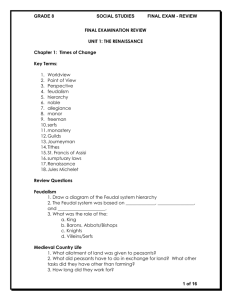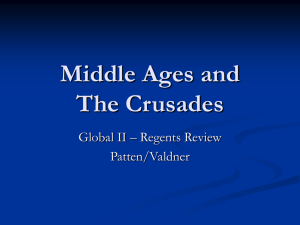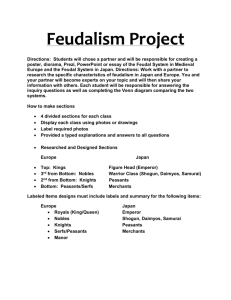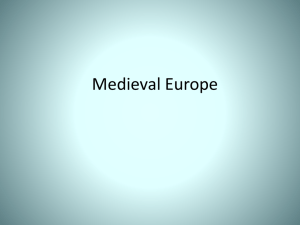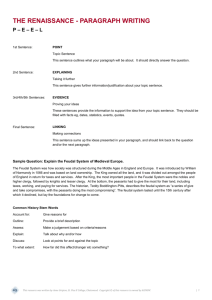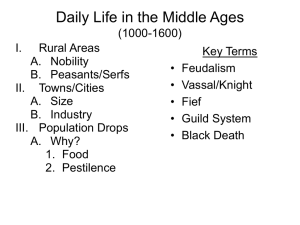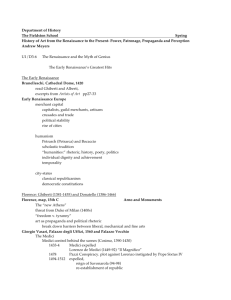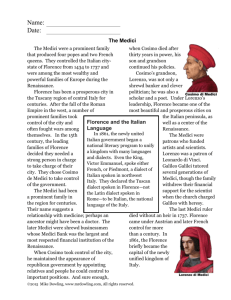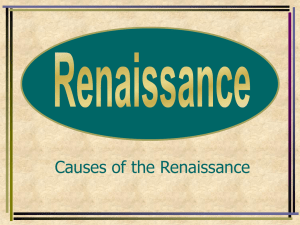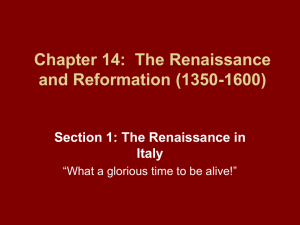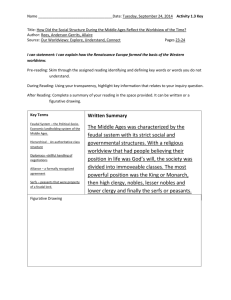The Renaissance: Rise of the Italian City
advertisement
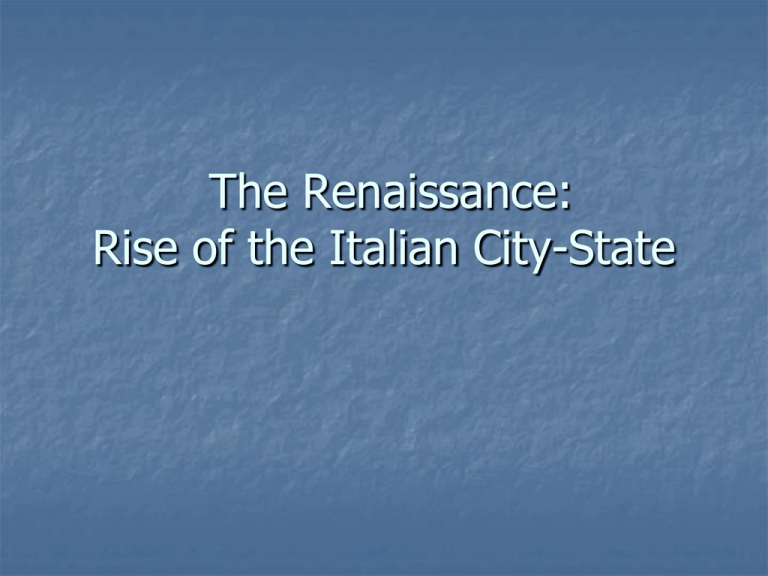
The Renaissance: Rise of the Italian City-State Renaissance: General Characteristics “rebirth”, or reawakening. Specifically… …Signals European interest in the “classical” past. Occurred mainly in Italy (late 13th C to early 17thC) An urban movement; rural peasants hardly felt its effects Most events and changes were limited to the rich, elite of society. Renaissance: Roots of Modernity? As of yet, we are not clear what modernity is, substantially, though we have some clues. We know , as a whole, it signals a departure from the past The past we are concerned with is Medieval institutions and ideas Feudal chains, were "loosening" in Italian citystates. Textbook tells us these city states were a 'bridge'—to what? How would this lead to a weakening of feudal structure in the Italian city states? Feudal Social Classes, Changes and Challenges SECULAR KING NOBLES KNIGHTS RELIGIOUS Unlike the Barons, Merchant $$ derived autonomously Increasing control of city MERCHANTS states by PROFESSIONALSMerchant rulers also Merchant challenged Papal rulers, leads CRAFTSMEN supremacy, by taking to new religious matters into political ideas PEASANTS their own hands: freemen particularly religious i.e. republics serfs architecture and /dictatorships sculpture & diplomacy POPE CARDINALS BISHOPS ABBOTS PRIESTS MONKS NUNS PEASANTS lay brothers and sisters serfs Lorenzo de Medici of Florence Cossimo de Medici of Florence Tomb of Lorenzo de Medici Plazzo Vecchio, Florence Medici court architecture, showcasing family line Sociological & Economic impact of the city state KING NOBLES KNIGHTS MERCHANTS PROFESSIONALS CRAFTSMEN PEASANTS freemen serfs Economy, urban not rural (so, not agriculturally based) Money starts flowing into cities creating changes in class structures Modern financial & banking techniques develop (bookkeeping, loans, trade economies) Competition between city states, propels the Merchant rulers to become patrons of arts and crafts, to beautify city $$ Flowed, too, to Craftsmen. Inspiring innovation and creativity City also promised some freedom for serfs who moved to cities Increasingly, individualism emphasized Increasingly, the notion of freedom from constraints… Cultural Outcomes: Symbolism Effect of growing autonomy, leads to a dramatic shift in popular symbolism The ideal figure of the past—The Chivalric Knight —is replaced by…. The “Renaissance Man” Values—to be knowledgeable about : the world Art and architecture / to have refined taste Classical sources—literature, art and science Crystallized in Castiglione’s, The Courtier Humanism Changing political, social and cultural ideals lead to… Humanism Derived from the Latin humanitas Viewed the classics (literature, philosophy and art) as their inspiration Stressed living in and understanding this world, human dignity, and responsible citizenship Saw knowledge as a guide to personal and political conduct Humanist Personalities 1. 2. 3. 4. 5. 6. Petrarch & Mirandola pg 18 Machiavelli pg 19-20 Castiglione pgs 22-23 Savonarola pgs 23 -24 More pgs 24 – 25 Erasmus pgs 18 & 25 -26
